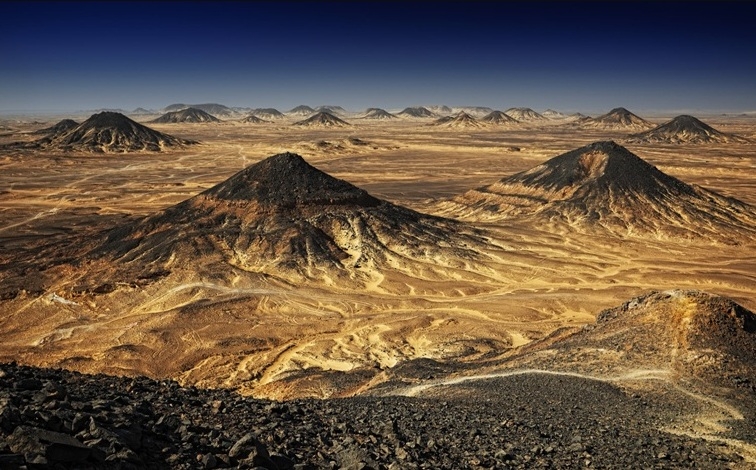A little to the North of the White Desert, the Black Desert is closer to Bahariya than Farafra; approximately 50 km to the South of Bawiti.
It is a configurations of black hills and rocks that stand as a compelling evidence of volcanic activity for the region in ancient geological ages; the mountains have eroded to coat the desert with a layer of black powder and rocks giving it its name, which refers to the vast expanses of quartzite and Aldoloret, in addition to iron and other igneous rocks, which were thrown with lava when those small volcanoes rebel.
The table-top mountains and charcoal peaks of the Black Desert are unique in Egypt. The sands surrounding the mounds are also soot-coated, with flashes of orange powdery sand revealed underneath.
Recently the black desert became natural reserves, because of the richness and biological diversity as a scientific international research area. Towards the end of the Black Desert are black volcanic hills that ages ago erupted a dark volcanic material called dolerite, which is what the black rocks are made of.
It is possible to climb several of the peaks for astounding views over the amazing landscape such as the English Mountain which is the highest point in the Black Desert. Camping under a bright night sky, looking for shooting stars and enjoying Bedouin cooking and hospitality, is a memorable part of visiting this uninhabited region.
The area of the Black Desert is characterized by its isolated hills, which considered one of the most important features that distinguish Bahariya Oasis from other deserts in Egypt. The Black Desert can be seen as you pass the road from Bahariya to Farafra, but if you want to venture in to its depths a tour guide is advised, tours can easily be arranged from either Bahariya or Farafra.

